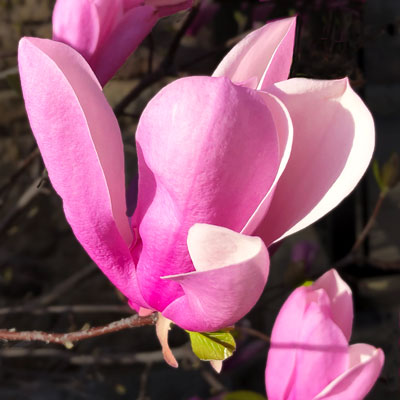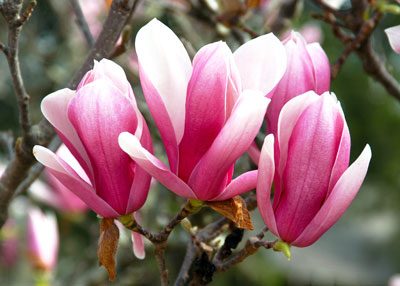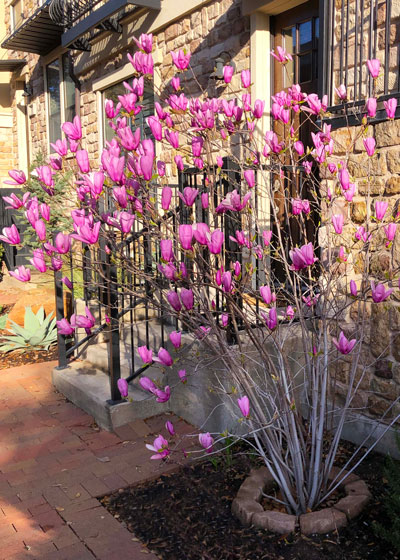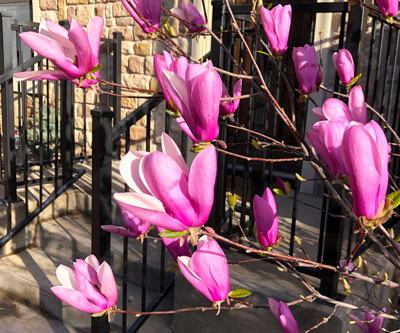Saucy Little Number for Early Spring

When I transferred from Texas A&M to Ohio State to finish my undergraduate degree in horticulture, I had never heard of saucer magnolia. We just didn’t have such plants in South Central Texas back then.
My life centered around the Horticulture and Forestry building and the Floriculture greenhouses at OSU. I walked around and in between those buildings many times every day. There on the southwest corner of H&F grew a large shrub or maybe a small tree. It was pretty enough, but I just walked past it. And then fall came and it dropped its leaves.
I didn’t think anything more about that plant until late winter when large buds began to swell. Soon they popped open to reveal beautiful pinkish-white magnolia blooms, and that was when I met saucer magnolia (Magnolia x soulangeana) for the very first time.
As I drove around Columbus and other parts of Ohio that spring and ensuing springs, I realized how beautiful and how popular the plant is in the North.

Lynn and I moved to Dallas and I took the job as Dallas County Extension horticulturist. As I drove the streets of Dallas County, I saw my new friend in many of the finer landscapes. As I visited cities in east and southeast Texas, saucer magnolia was being used more often.
Adding to the excitement, nurseries were introducing selections with deeper flower colors of rose and purple tints. Gardeners who saw them in nurseries were getting very excited.

The quick facts to know…
• Saucer magnolia (Magnolia x soulangeana)
• Generally grown as a large shrub to 15-20 ft. tall and 15 ft. wide.
• Deciduous. Blooms before new leaves are produced in spring. Blooms so early that late freezes sometimes damage buds or flowers. Planting in protected location helps.
• Morning sun, afternoon shade works well. Prefers not to be planted in hot, reflective sites against stone or concrete walls on western exposures.
• Prefers acidic soils, but tolerates neutral or slightly alkaline soils. Do not grow in shallow, white chalky soils.

• Does best in highly organic soil that is kept uniformly moist.
• Iron deficiency is its main enemy. Use iron and sulfur soil acidifier to correct it. Keep iron products off masonry surfaces that could be stained.
• Watch for improved, more colorful varieties with richer shades of deep pink and purple flowers. Nurseries have them in early spring, but they often sell as soon as the buds open, so check frequently.
